Why throw away money when you don’t have to? This here is my little contribution to helping you save maybe a dollar or two while you gather your ingredients for your tamalada, gleaned from my gathering of ingredients earlier today.
First up, Maiz blanco, base for your own nixtamal. For some stupid reason, my local Big Saver stopped carrying this item in the bulk bin, now they just have a few small bags at $1.99 a lb. Outrageous! I head over to El Mercadito where you can usually find everything at a good rate, but it turned out they were selling their maiz at $3 a lb! Now that is straight out gouging, knowing that people are going to be stopping by for their ingredients. Boo, Hiss! Chale, I ain’t having none of it. I drove down the block to El Super on Brooklyn and Lorena were the same maiz was being sold for $1.29 a lb. Now that’s a bit more reasonable.
The best hojas to use nowadays are these large enconchada kind, it makes those old kind seem like scraps. Best price was at Big Saver, $3.69 for a pack. Though I don’t know about that sulphur dust, I’m gonna look that up after I use these.
Cuz I sure ain’t going to throw these out if I find out something terrible! I think I have enough.
It’s extra work to make your masa from scratch, so do like most people do and order your masa from your local tortilleria. Here we see a recent batch of masa preparada from La Morenita Bakery. If you special order it they can make your masa without lard, using only vegetable shortening instead. Excellent!
The masa is that light and fluffy kind that many enjoy, and the tamales come out very good. I like my masa less fluffy and silkier instead, but that’s a personal preference. But at 80¢ a lb it is a great option.
Or you can go the reliable Maseca route, with its finely ground maiz that leads to very nice tamales. I bought a few bags just for backup, in case something goes wrong and I need emergency masa. Hey, it’s happened. I bought these at Big Saver for $2.49 because I didn’t have a cart to carry them with at El Super, where they were going for $1.99. Doh! What I could have done with that extra dollar, oh my.
For fresh chiles, Superking is the place to beat: Pasillas @ 99¢ for 2 lbs! Now that’s a bargain. For $4.22 I got me a big pot of chiles, ready to be cleaned and roasted. Although near closing time, when its less packed, the selection was getting sparse. There was a woman in front of me that was taking bagfulls as well. Yup, it turned out she was making tamales too!
Anaheim chiles were going for 69¢ a lb, not bad either. I used these recently and they were quite flavorable.
Dry chiles seem to be fairly priced across the spectrum. These New Mexico chiles in the bulk bin at Big Saver were $2.99 a lb, fair enough. Similar prices at the other shops as well.
At Vons or Pavillions, $6 for a 2 lb block of cheese. That will work.
This concludes our sporadic and not very useful money saving segment of the show. Enjoy!
PS. If you want to learn how to make tamales, check out my posts on CHANFLES! where I break it down into easy to follow steps. Or I think they’re easy…

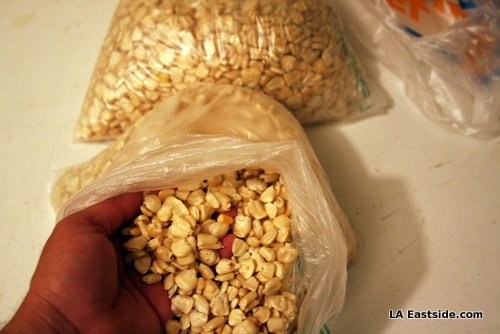
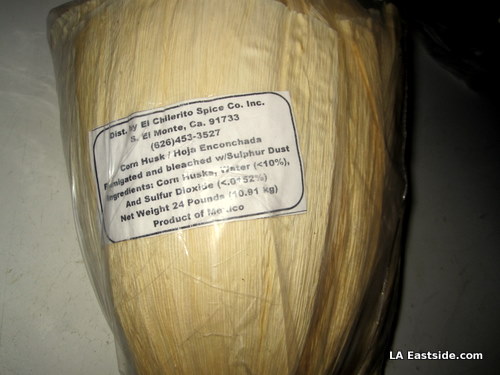



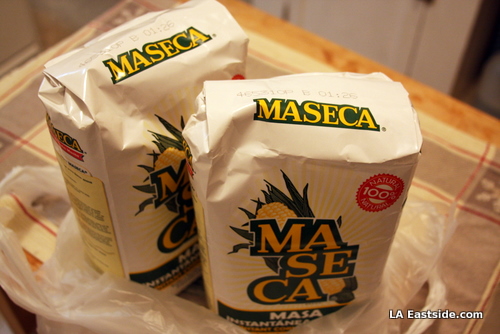
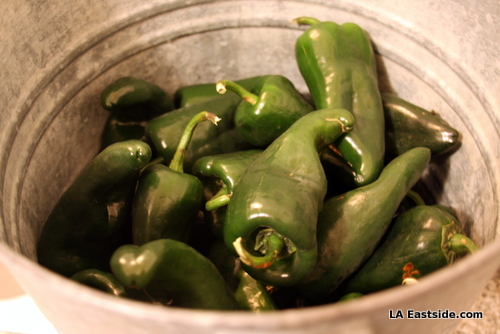
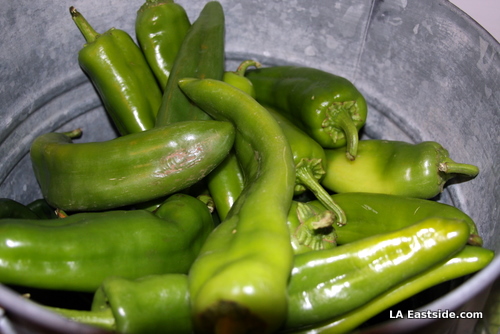
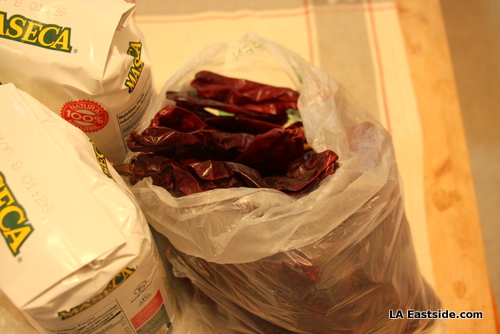
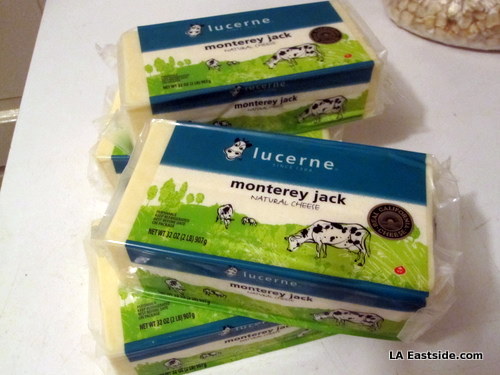
Thanks. Very enjoyable read. What was the total cost for making these tamales and how many can you make out of it?
Caxcan,
I haven’t tallied up the total cost but I’m getting stuff together for lots of tamales. But its always cheaper and better to make your own. I expect to have 2 huge tamaleras filled with tamales, so roughly around 200 tamales I estimate. I’ll see if I can keep count this year.
it’s all good so long as we don’t see that American cheese abomination of a tamal like last year. Blah
Thanks for reminding me to get some Kraft Cheez!
Update: Maseca is only $1.78 at Food4Less, and Mazola corn oil is $2 at Superior.
The money in food isn’t in growing it, it is in processing it. Fruit that is cut up is worth more than when it is whole because you can mark up the price, and everyone cuts fruit in different ways and mixes it in different ways making bargain shopping a great deal more complicated. I can understand why a supermarket would stop selling inexpensive base ingredients when processed food is making better margins and is supported by an economy where energy (to process and package stuff) is cheap.
had a great time last weekend!
gracias to you el chavo, vidalia & chimatli for having me.
Thanks for coming by BT! I think Vidalia has your tamales btw, better jump on it before she eats them all!